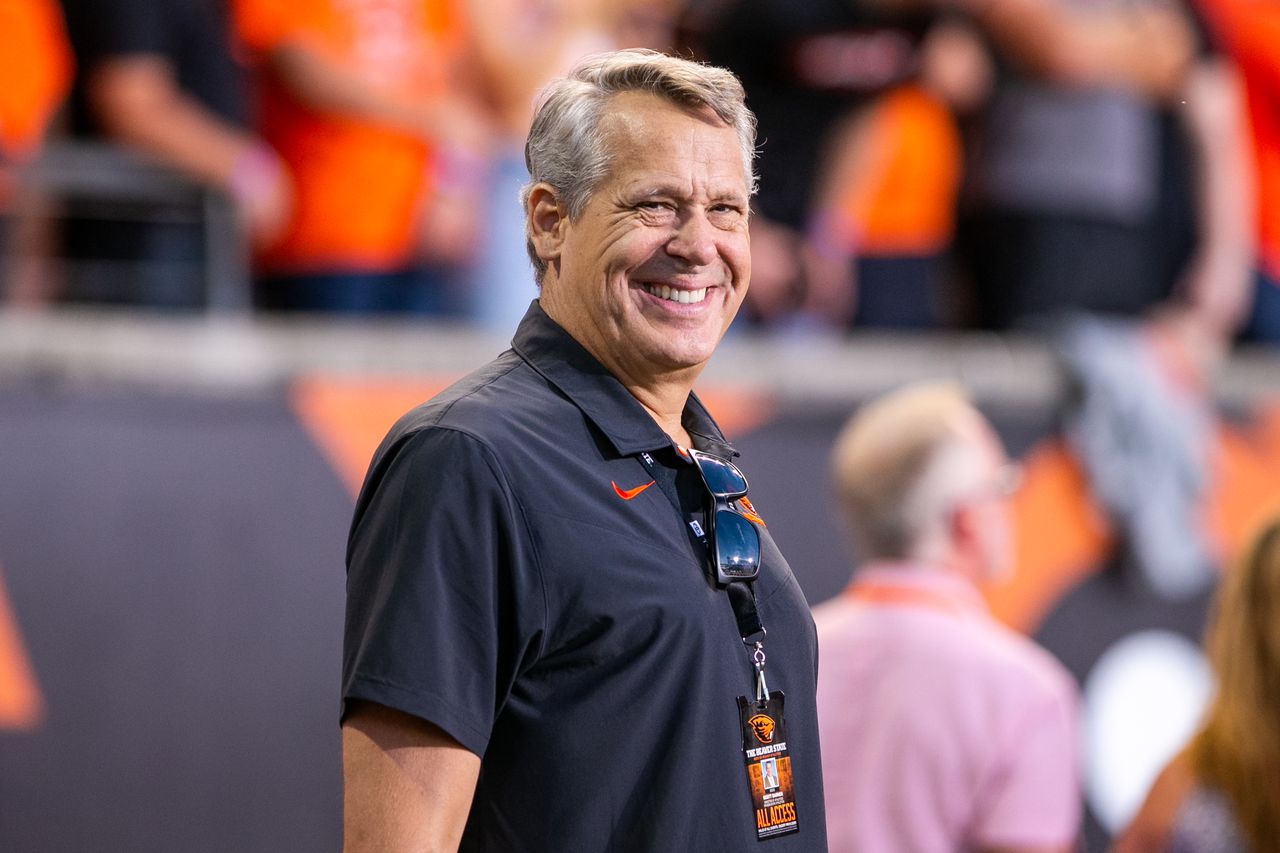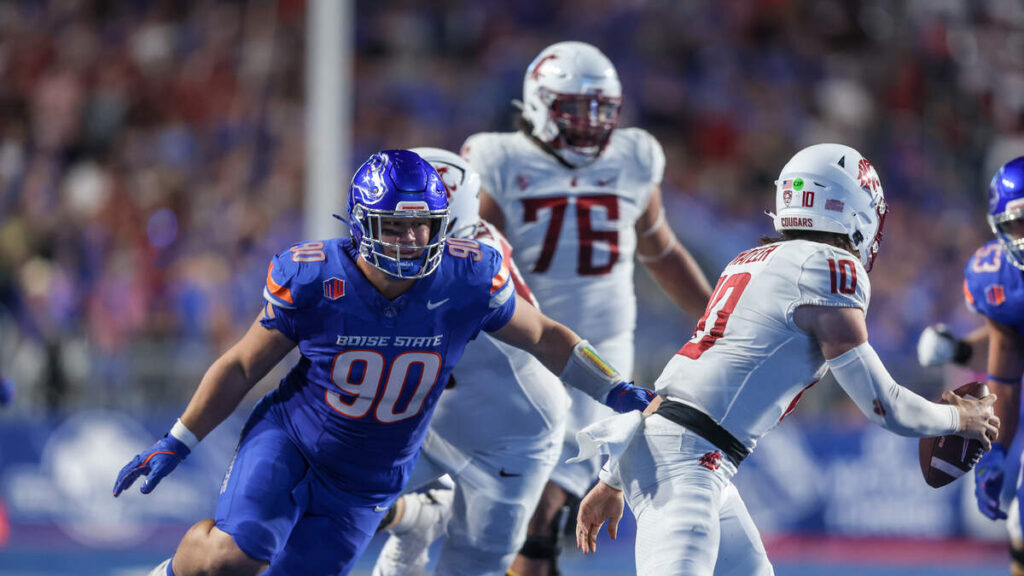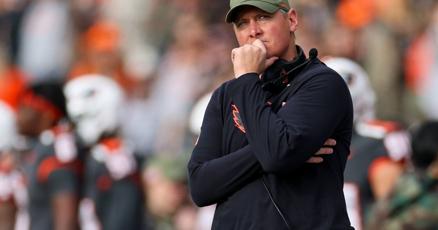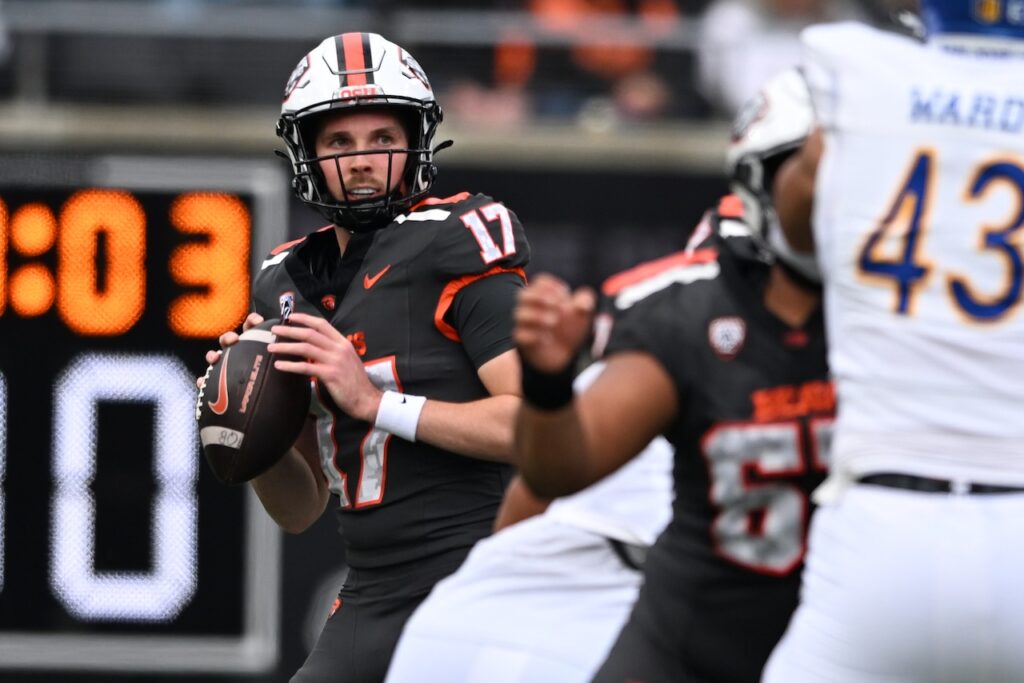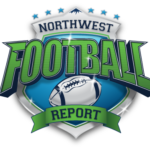Barnes believes it’s appropriate to “incentivize” revenue to teams participating in the CFP, but is against an uneven split of media rights payouts
In the run-up to a Pac-12 media rights agreement and the grant of rights, uneven distribution of revenue among conference schools has been a point of discussion.
Will power players such as Oregon and Washington eventually receive a larger slice of the revenue pie than Oregon State?
OSU athletic director Scott Barnes is unconcerned. He believes the “baseline revenue,” meaning television money, will be split evenly among the existing 10 Pac-12 members. Where uneven revenue sharing comes into play has to do with postseason bonuses.
Barnes said at this point, Pac-12 schools that participate in the College Football Playoff receiving a greater share of postseason revenue than others is a hypothetical concept, though it is being seriously discussed.
It’s substantial money, as a recent report said CFP payouts could hit $2 billion per year by 2027. If a competing school makes a playoff run and is allowed to keep up to half of the payout, it could be an eight-figure windfall.
“My feeling on that is that I’m good with it,” Barnes said. “I think that’s a next step and where we sit, we’re in a position, frankly, with our football program. As you think about the percentage split, it’s got to be balanced, but I think there’s traction and I would support going down the path of incentivized distribution of things like CFP.”
There’s no indication the Pac-12 is currently discussing an uneven split of media rights revenue for this upcoming contract. But what about next time? Would schools with more leverage for various reasons, like Oregon, Washington, Stanford and California, push to get a slightly larger percentage of television and streaming revenue?
To Barnes, this isn’t so much a topic of fairness as it is the health of a conference. If a higher percentage of media dollars are given to schools currently holding the power, Barnes said it weakens the conference.
“You think about the schools you’re pulling up to be relevant and competitive as much as you’re thinking about the top, whomever that is,” Barnes said. “What’s important is that you’re giving the resources to those that are trying to move up. … to me, the health of a conference is the depth of a conference.”
Oregon State has some strengths, in that it’s located in a defined college town, has a modern football stadium, numerous programs with recent success, and a football program that has developed a strong culture. But the weaknesses are apparent, too, particularly its location in a small market.
How does OSU remain relevant as a Power 5 school given its constraints?
Barnes said a constant theme with his head coaches is “focusing on differentiating yourself, and we do that with a culture. Our values at Oregon State isn’t for everyone, but we believe we have a niche in the type of student athlete who we recruit and thrives here.”
Barnes adds OSU’s athletics budget isn’t as large as some in the conference, so his department must be “extremely strategic. We have to prove we can punch above our weight.” One example Barnes uses is that in fundraising, “in many instances, were way above others our size in the dollars we raised, whether it’s for projects or other things.” There’s an emphasis on raising and spending money in areas that increase revenue streams, such as premium seating in Reser Stadium, and potentially Goss Stadium and Gill Coliseum.
Still, there may come a time when market size and ability to generate revenue puts Oregon State at a crossroads. As the nation’s power players continues to develop the top end of college athletics, there’s talk of contraction. The Power 5 conferences currently include 65 schools, including Notre Dame. FOX college football analyst Joel Klatt recently theorized that Power 5 conferences will soon start to drop schools that don’t increase value to the bottom line.
“Only a certain number or a number of teams in every one of these conferences are actually driving the valuation for the entire conference. Pretty soon, those teams are going to be like, ‘Hey, we can’t handle all the dead weight at this point. Having X, Y or Z school in our conference is just diluting the conference,” Klatt said on his podcast.
Barnes said Oregon State is not “dead weight.” He believes OSU brings value from the student experience, product on the field and continuing to invest by improving facilities, coaching and athletic programs.
“Athletics here is only going up. So as I think about our ascension, if I can say that, and our trajectory as an athletic program, I believe we’ve become more viable in being one of those schools, if in fact, that ever happened,” Barnes said.
–Nick Daschel @nickdaschel

